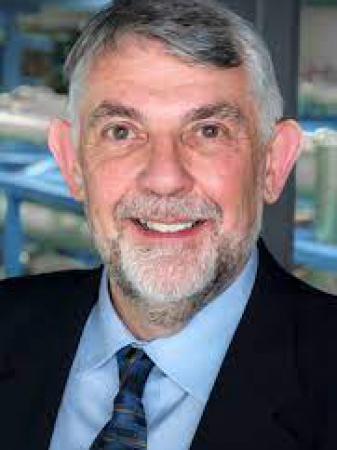
Chris Deeney
Chris Deeney
Laboratory for Laser Energetics
Monday, March 28, 2022
3:00pm
[Virtual
Abstract: The last five years have seen remarkable advances in four key missions of the Laboratory for Laser Energetics (LLE): fusion, high-energy-density physics (HEDP), laser technology, and education. By integrating theory and computation, statistical modeling, three-dimensional diagnostic methods, and improved target fabrication and diagnostics, directly driven implosions on the 30-kJ Omega Laser Facility have produced record neutron yields (>3e14) and hot spot pressures in deuterium-tritium implosions (80 Gbar).
The Omega program is showing the promise of coupling significant energy to capsules. A key part of the enhanced coupling comes from a deeper understanding of laser-plasma interactions and instabilities. The community is moving to a more predictive capability for these physics topics and generating fundamental measurements (i.e., directly measuring the electron distribution functions). A key conclusion of this research is that future laser drivers will require increased bandwidth, >3% versus the <1% on Omega, to control cross-beam energy transfer and other instabilities.
Recent experiments have advanced an understanding of materials, pressures, and densities relevant to planets and stars. For example, experiments on OMEGA EP have measured melt curves of magnesium oxide at pressures up to 1 TPa.
Achievements in ICF and HEDP are enabled through detailed experiments, advances in diagnostics, fundamental understanding of laser-plasma interactions, precision control, and advances in laser technology.
In this talk, we will discuss progress in the LLE program and highlight pioneering achievements, many of which are led by our excellent graduate students.
Bio: Dr. Christopher Deeney is the Deputy Director at the Laboratory for Laser Energetics. He previously served as Chief Science and Technology Officer, National Security Directorate, at Pacific Northwest National Laboratory (PNNL), in addition to his years of experience at the Nevada National Security Site, Department of Energy’s National Nuclear Security Administration, and Sandia National Laboratories. Chris is known as a scientific and innovation leader with direct experience running complex operations, especially in high-energy-density physics. Deeney serves as a key member of the Laboratory’s senior management staff, providing executive-level guidance and direction, including serving as the Laboratory’s Director when required. He participates in the day-to-day management of the Laboratory; fosters successful relationships among University Senior Leadership, medical center, academic and administrative departments, and students; federal, local, and state government officials; peer organizations and laboratories; Department of Energy; National Science Foundation; Department of Defense; private industry; and the local community. He, along with the Director, participates in ongoing University strategy development and specific Laboratory strategies with an emphasis on executability and workforce balance between scientists, engineers and technical staff. Chris received his Ph.D. in Plasma Physics from the Imperial College in the United Kingdom. He is a Fellow of the American Physical Society and the Institute of Electrical and Electronic Engineers.